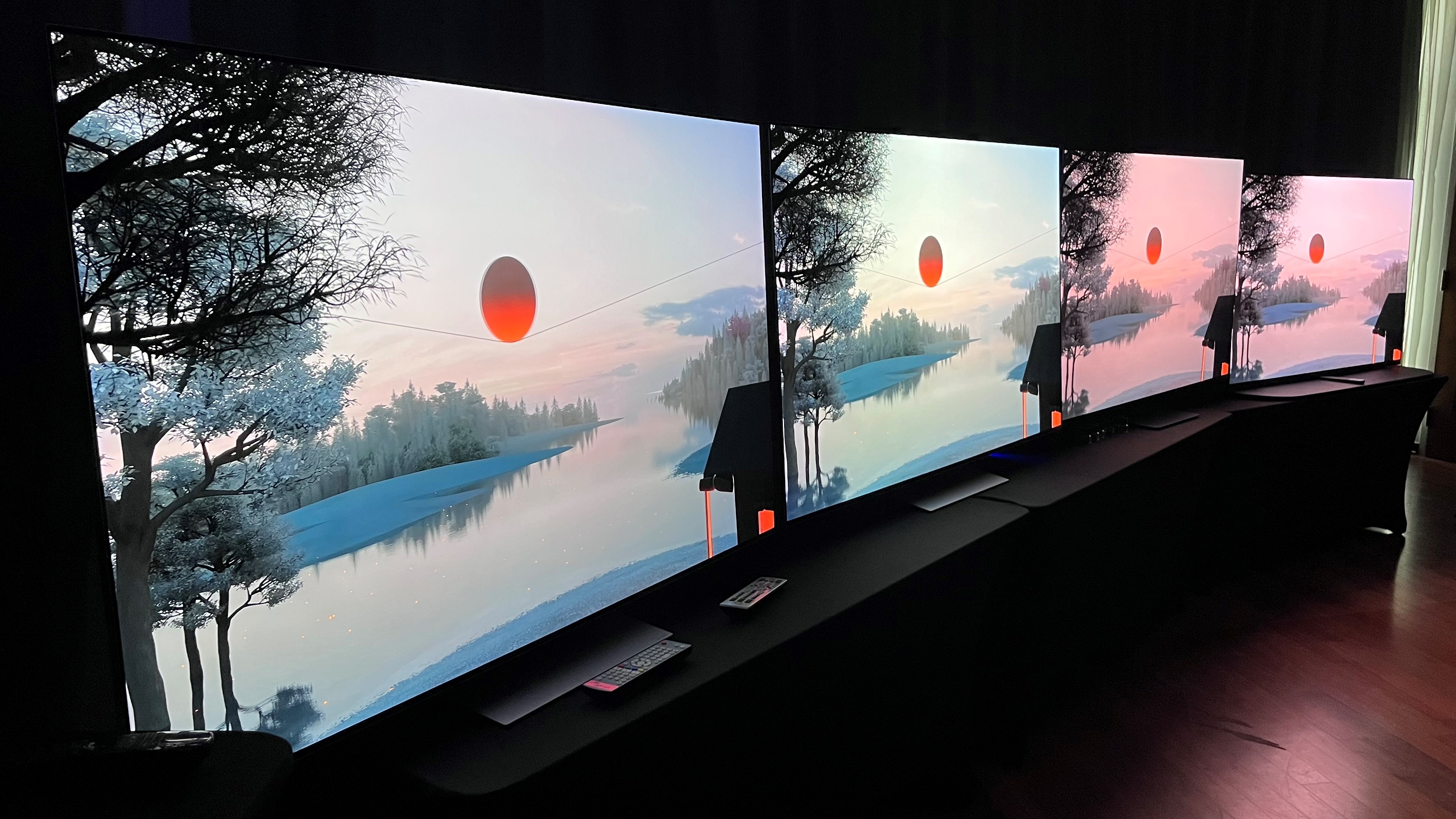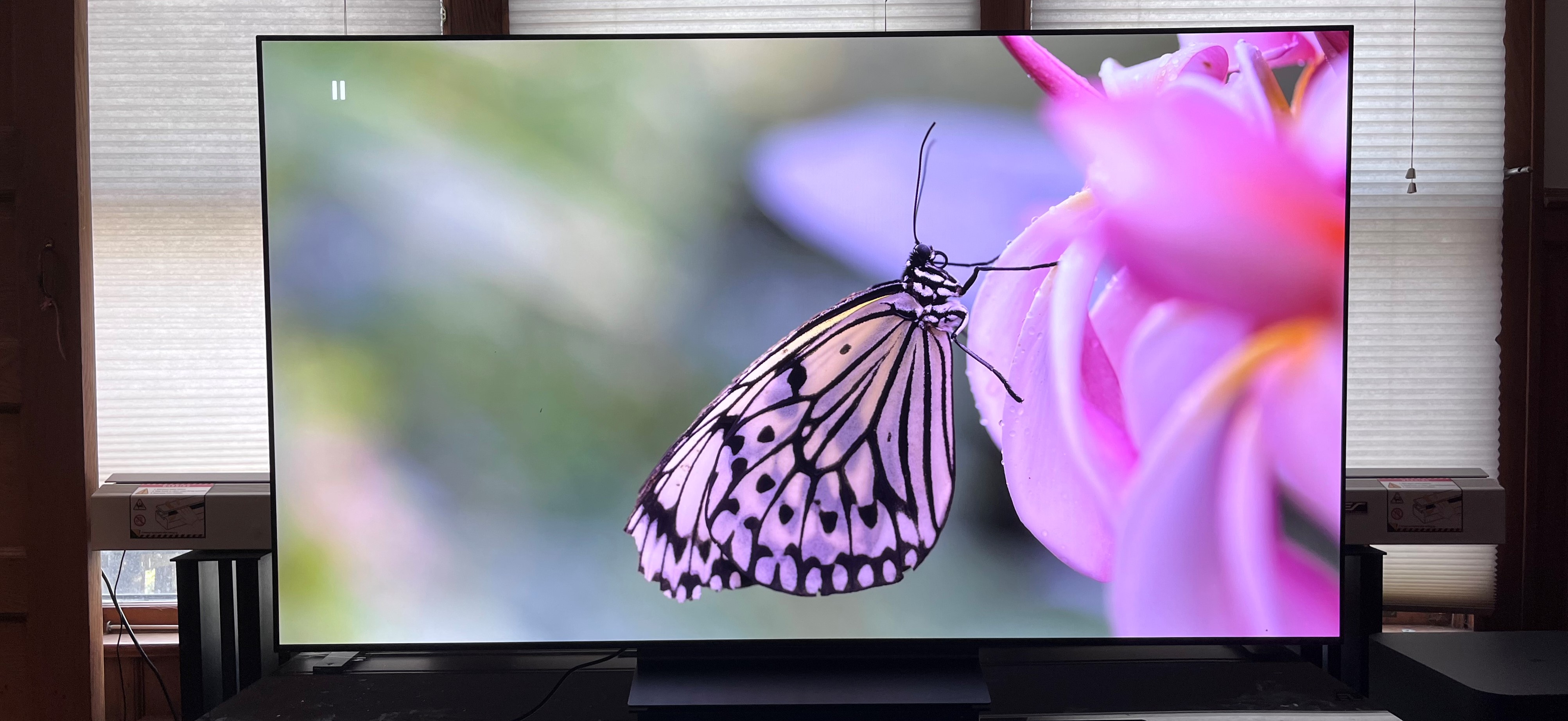7 things you need to know before buying an OLED TV in 2023
The latest OLED TV technologies to look out for

As one of the leading TV technologies around, OLED TVs are highly sought after when upgrading a home theater setup to a premium set. But like any technology, it is constantly evolving as companies seek to innovate.
While OLED TVs are considered a benchmark for high-end sets, there has been further development in display technologies in the past few years. Most recently, there was the launch of QD-OLED, which debuted in 2022 and adds a new spin to the whole thing.
How can you keep up with all the latest jargon, like QD-OLED? That's what we're here for – to explain some of the terms of you're likely to see when browsing the OLED TV options.
Before we get into it, it’s worth getting up to speed with what OLED technology is first. The acronym stands for 'organic light emitting diode', and the key to OLED is that each pixel emits its own light to give stunning contrast between light and dark shades. If you want to know more, read our article: What is OLED?
After more than 35 years since its invention, OLED display technology continues to evolve, which can make choosing the right TV for your home difficult. Before diving into our guide about the best OLED TVs for 2023, find out what those technical TV terms mean so you can choose the right TV for you.
What is QD-OLED 2nd generation?
The first Quantum-Dot (QD) OLED TV was released in 2022 by Samsung, when it launched the Samsung S95B. After more than a decade of refusing to work with OLED technology, we were blown away by the company’s approach to using it. Like other OLED TVs, this display technology allows for each pixel to be self-illuminated, but the key difference is that it uses quantum dot layer to deliver richer colors and higher levels of brightness.
Samsung has continued to develop QD-OLED technology. The company has been successful in doing so too, with the launch of the Samsung S95C in March 2023, and Samsung S90C following it. The S95C uses second generation QD-OLED technology, which increases brightness (again) by more than 30%.
Sign up for breaking news, reviews, opinion, top tech deals, and more.
The biggest contributor to the TV’s increased brightness is a new ‘HyperEfficient EL’ system, which essentially makes it more efficient at getting light out of the screen and into your eyes. We’ve been amazed at how the changes mark a huge leap forward in QD-OLED TVs. Compared to standard mid-range OLED displays, the second generation of QD-OLED is 70% brighter – but also, a lot more expensive.

What is Micro Lens Array?
While OLED display technology is known for stunning picture quality, it often falls short when it comes to brightness. That’s where brightness-enhancing technologies like Micro Lens Array (MLA) comes in. How it works is by layering billions of microscopic lenses on top of OLED pixels to reduce light leaking.
This brightness enhancing technology is behind some of the brightest OLED TVs we’ve seen. It is featured in the LG G3, rivals the Samsung S95C QD-OLED TV for brightness in our tests, and will be included in the Panasonic LZ2000 and Philips OLED+908 in countries where these TVs are released (which does not include the US). You can read more about Micro Lens Array tech here.

What is 120Hz and 144 Hz?
A TV’s refresh rate means how many times the image refreshes each second. It's measured in hertz (Hz), and 60Hz is equal to 60 frames per second. This might not be too vital in regular TV viewing. But for gamers and movie lovers, it matters.
Modern TVs are usually either 60Hz or 120Hz but higher-end TVs are usually 120Hz as standard (though 120Hz support is starting to arrive in mid-range TVs). These higher frequencies are sought after by mainly gamers who want the fastest response time and smoother motion, but they're good for cinephiles too.
For example, a 120Hz TV would enable you to watch 24fps without the expected judder that 60Hz TVs tend to have. On the other hand, higher TV refresh rates also tend to lead to lower input lags, which is advantageous for gamers specifically who require an instant reaction between pressing a button on their controller and it reacting on the display.
While many serious gamers and cinephiles will consider looking among the best 120Hz TVs, there are those that go beyond to deliver up to 144Hz. Because next-generation consoles like the PS5 and Xbox Series X don’t support 144Hz, there isn’t much reason for buying one unless you're a serious PC gamer.
Are 144Hz 4K TVs a big deal then? For those that have a high-powered PC setup, maybe – but not for the rest of us.

What’s the difference between OLED Evo and OLED Ex?
OLED Evo is a term used by LG to refer to type of OLED technology. The technology enhances the brightness of LG’s standard OLED displays as well as their energy efficiency – and in LG's case, it also refers to that tech being combined with LG's own image processing. The technology is best featured in the LG C3 Evo OLED TV, which is ranked among our best OLED TVs to buy list for 2023.
OLED Ex is essentially the name for this screen tech when it's not being used by LG, and where LG's image processing isn't involved.

What is Dolby Vision and HDR10+?
High dynamic range (HDR) video technology is a staple on today's TVs. The format aims to get things closer to what the eye sees, with more realistic colors and contrast. Dolby Vision and HDR10+ are essentially more advanced HDR formats that have since taken off.
Both Dolby Vision and HDR10+ are made to take movies mastered for up to 10,000 nits at a peak resolution of up to 8K, and make that look good on your TV that can probably only handle 5-15% of that brightness. However, the key difference between the two is that one is essentially a brand name. Dolby Vision is licensed by Dolby, whereas HDR10+ is open-standard and non-proprietary.
Many streaming services use Dolby Vision, which makes it the more valuable one to have. All OLED TVs except Samsung's support it. But don't worry – if your TV doesn't support one of these formats and you want to watch something that uses it, you'll still get HDR. It'll just be a more basic version of it, not the advanced type.
What is Dolby Atmos?
TVs in general aren’t known for having particularly great audio quality. More often than not, a soundbar system will need to be purchased separately to achieve a premium sound.
The main surround sound audio format to look for these days is Dolby Atmos, and effectively every OLED TV supports it these days. The format is considered the audio industry’s best in-class as it creates a sound that is more immersive and cinematic, including height as well as surround channels. The best Dolby Atmos soundbars are a good place to start if you want the full effect, though many TVs will try to make use of positional audio from their own speakers, to varying degrees of effectiveness.
Is burn-in still an issue?
Screen burn-in is when a visible mark is permanently left on a display screen. It occurs when a static image is left on for too long, which leads to the permanent discolouration of an area.
Burn-in was a significant concern for OLED TV owners. However, given that many of today’s OLED TV manufacturers include screen saver settings after periods of inactivity, heat control systems, and other software solutions including a feature that subtly moves images on screen by tiny micro movements, it's not really an issue with today's sets.

Amelia became the Senior Editor for Home Entertainment at TechRadar in the UK in April 2023. With a background of more than eight years in tech and finance publishing, she's now leading our coverage to bring you a fresh perspective on everything to do with TV and audio. When she's not tinkering with the latest gadgets and gizmos in the ever-evolving world of home entertainment, you’ll find her watching movies, taking pictures and travelling.